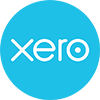Budgeting is a cornerstone of financial success for small businesses. With the right tools and knowledge, you can create budgets that align with your goals and provide a roadmap for sustainable growth. Xero, a popular accounting software, offers powerful budgeting features that can simplify the process. In this guide, our bookkeepers in Melbourne will explore Xero’s budgeting capabilities, providing a step-by-step tutorial to help small businesses create, track and analyse budgets effectively.
Setting Up Your Budget in Xero
- Accessing the Budgeting Feature:
- Log in to your Xero account and navigate to the ‘Business’ menu. Click on ‘Budget Manager’ to access the budgeting tool.
- Selecting Your Budget Period:
- Choose the fiscal year or budget period you want to create. Xero allows you to create budgets for multiple years.
- Creating a New Budget:
- Click ‘New Budget’ and give it a name that reflects the budget’s purpose or the fiscal year it covers.
- Selecting Budget Lines:
- Xero offers flexibility in budgeting. You can create budgets for revenue, expenses or both. Select the appropriate option for your budget.
- Adding Budget Lines:
- Begin adding line items to your budget. This includes individual revenue streams (e.g., sales, services) and expense categories (e.g., rent, utilities).
Budgeting Tips & Best Practices
- Be Realistic – When creating your budget, base it on realistic expectations. Historical data and market research can guide your revenue projections, while expenses should reflect your known costs.
- Track Performance – Regularly compare your actual financial performance to your budget. Xero provides tools to easily track and analyse
- Flexibility is Key – Be prepared to adjust your budget as circumstances change. A flexible budget is a valuable tool that can adapt to evolving business conditions.
Monitoring & Analysing Budgets in Xero
- Comparing Actual vs. Budget – In Xero’s budget manager, use the ‘Variance Report’ to see how your actual financial performance compares to your budget.
- Drill-Down Analysis – Xero allows you to drill down into specific accounts or categories to identify areas where your budget may need adjustments.
- Regular Reporting – Set a schedule for reviewing your budget performance. Regular reporting helps you stay on top of your financial goals.
Generating Budget Reports
- Printing Reports – Xero enables you to print budget reports for reference, sharing with stakeholders or preparing for meetings.
- Exporting Data – You can export budget data in various formats (e.g., PDF, Excel) for further analysis or presentation.
Conclusion
Budgeting in Xero is a valuable tool for small businesses looking to achieve financial success. With Xero’s comprehensive budgeting features, it’s possible to create budgets that align with your goals, track your financial performance and make data-driven decisions. By following this step-by-step guide and embracing best practices, you can harness the power of budgeting to navigate financial challenges and pave the way for growth and long-term success.
For more information on budgeting in Xero, or for assistance with other bookkeeping accounting services, get in touch with Alexander Bright – a trusted provider of bookkeeping services in Melbourne.
Disclaimer: The accounting advice provided in this article is for informational purposes only and should be self-verified or consulted with a qualified accountant before making any financial decisions.
Managed Accounting Services
Our Newsletter
Article Categories
Select Month
 +61 3 8658 5821
+61 3 8658 5821




